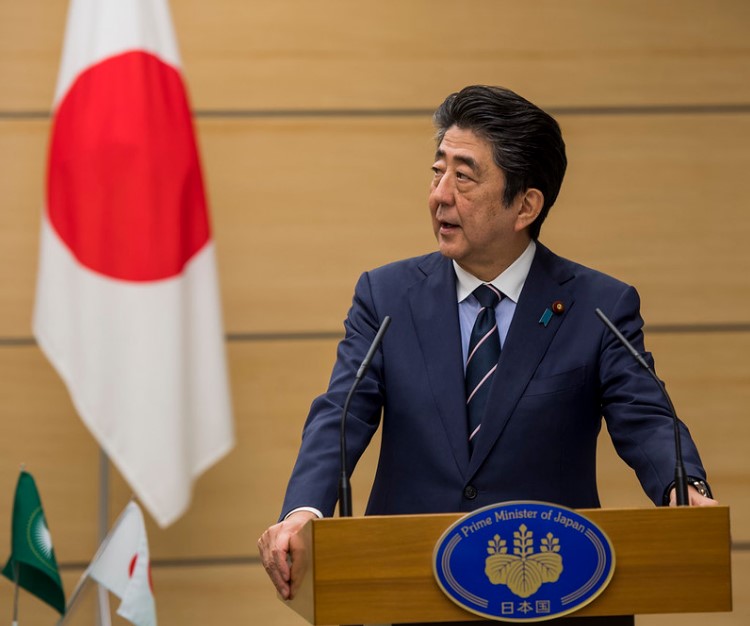On Friday 8 July, a few minutes after 5pm local time, Shinzo Abe was pronounced dead. The former PM of Japan, and one of the most influential bourgeois politicians of the last decade, not only in his country but in East Asia generally, was assassinated while making an electoral speech in favour of one of his fellow Liberal Democratic Party (LDP) members.
An outpouring of eulogies and tears erupted from representatives of the ruling classes the world over. Donald Trump, Joe Biden, Hillary Clinton, Boris Johnson, Keir Starmer, Vladimir Putin, Volodymyr Zelensky, and many others all put aside their ‘differences’ and united to express their shock, to condemn the killing, and to laud Abe’s legacy.
But the real legacy of Mr. Abe is a massive collapse of living standards for the Japanese working class, all the while ensuring that the ruling class continues to enrich itself. He took great care in nurturing the LDP rule he had inherited, making it seemingly one of the most stable bourgeois regimes in the world. All the while he maintained close connections with ultra-nationalists, ultra-traditionalists, the far-right, and even self-avowed fascists.
We shed no tears for this bourgeois gangster. But why was he killed? And what will be the impact of his dramatic event on the political situation in Japan?
“A certain religious group”
The assassin, Tetsuya Yamagami, 41, had been a former member of the Japanese Maritime Self-Defence Force (JMSDF, equivalent to the navy). While details were and remain sketchy, a line has been circulating in the media that the assassin claimed “to not have any issues with Mr Abe’s politics” but “with a certain religious group he’s been connected to”.
Amidst the chaos of the day, damage control in the media was proving particularly difficult. By the evening, most media outlets in the country were heavily promoting the fact of the assassin’s former JMSDF membership, while only mentioning his comments about his motives in passing. Early on Saturday, some reports were outright omitting reference to a “religious” group. Another very curious fact that sheds some light on the freedom and independence of the press in Japan was that the Friday special editions of the five largest newspapers: Asahi Shinbun, Mainichi Shinbun, Yomiuri Shinbun, Sankei Shinbun and Nikkei Shinbun, all carried exactly the same headline.
さすがに大手五紙全部が同じ見出しとは、こんなの初めて見たよ。 pic.twitter.com/rkhHbPq8lM
— 坂上沼 (@calpistime) July 8, 2022
Along with these revelations, a significant number of right-wingers on social media started asking further questions regarding the assassin's identity. A suggestion that the assassin “couldn’t possibly be a true Japanese” led immediately to baseless claims that he must have been a Zainichi Korean. This obvious nationalist smear led the South Korean consulate in Fukuoka to issue a warning regarding possible hate crimes.
But the news was already out. “A certain religious group” was amongst the most trending searches on Japanese Twitter. Already on Friday, many people expected this was a reference to the Unification Church, commonly referred to as ‘the Moonies’ (after its founder, Sun Myung Moon), or as they are formally known nowadays, ‘The Family Federation for World Peace and Unification’. On Saturday evening, Gendai Business confirmed this suspicion.
It all stays in the family
The links between the LDP and the Unification Church begin as early as the 1960s. With the church set up as a rabidly anti-communist entity from day one, and the LDP’s very raison d'être being the destruction of the left and maintaining Japan as a bulwark of US imperialism, this was a very natural relationship.
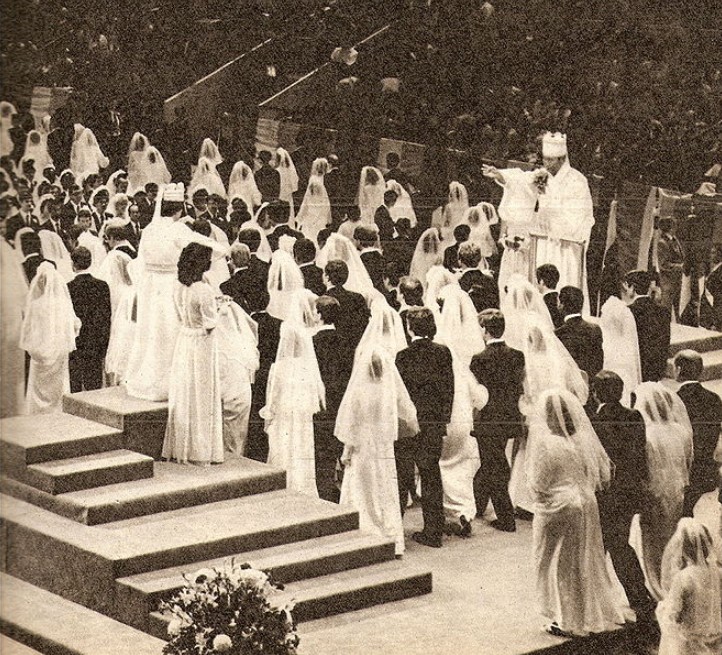 The Unification Church was set up as a rabidly anti-communist entity from day one / Image: Public Domain
The Unification Church was set up as a rabidly anti-communist entity from day one / Image: Public Domain
While Sun Myung Moon was establishing the church in South Korea in the 1950s, in Japan the CIA enacted the so-called ‘1955 system’ of essentially one-party rule by the LDP. Key to the success of this operation was the participation of former war criminals and yakuza gangsters, released from Sugamo prison in 1948 by the US occupation force.
One of these men was a major war criminal, the architect of brutal exploitation of Manchuria, and a signatory of the declaration of war upon the US and the British Empire: Nobusuke Kishi. Kishi turned out to be one of the most reliable pawns of US imperialism, along with his colleagues Yoshio Kodama and Ryōichi Sasakawa. Upon establishing the LDP he pulled the strings as the party’s secretary, until he himself became the PM in 1957. After being forced out of office in 1960 by Anpo protests, he kept calling the shots as an influential grandee of the LDP.
He founded Seiwa Seisaku Kenkyūkai, a faction within the party which is today the largest. It continues in the ultra-nationalist and reactionary traditions of its founder. In the 1960s, Kishi also established the party’s first strong connections with the Unification Church, giving them a plot of land in Tokyo to establish their Japanese headquarters there. Ever since then, the party and the church functioned in symbiosis, the church supporting the LDP in elections, while obtaining their protection and support in exchange.
Nobusuke Kishi was also grandfather to Shinzo Abe. When the mantle of party leader and PM was passed down to him, he continued the reactionary policies of Seiwa Seisaku Kenkyūkai, in particular pushing for the amendment of the 1947 constitution and its Article 9, which forbids Japan from having a proper standing army. He had also made visits to the Yasukuni Shrine where war criminals that weren’t as lucky as his grandfather are commemorated, and in line with historical revisionism of another arch-reactionary group he belonged to, Nippon Kaigi, he consistently denied Japanese war crimes in China and Korea.
Needless to say, the link with the Unification Church was also maintained under his tenure. It transpired that Yamagami’s mother was a member of the church, and had bankrupted herself with donations, leading her son to develop a murderous grudge. Initially he had planned to kill a high-ranking member of the church, but after seeing an opportunity to kill Abe, he took it.
The real legacy of Shinzo Abe
Following his death, the scion of this dynasty of thugs and gangsters is celebrated as a knight of democracy in shining armour. The assassination is being painted as “an act of terror against democracy”. Among people eulogising Mr Abe are such fellow “democrats” as Jair Bolsonaro, Vladimir Putin, Donald Trump and Nahendra Modi. The latter two were particularly close to Mr Abe.
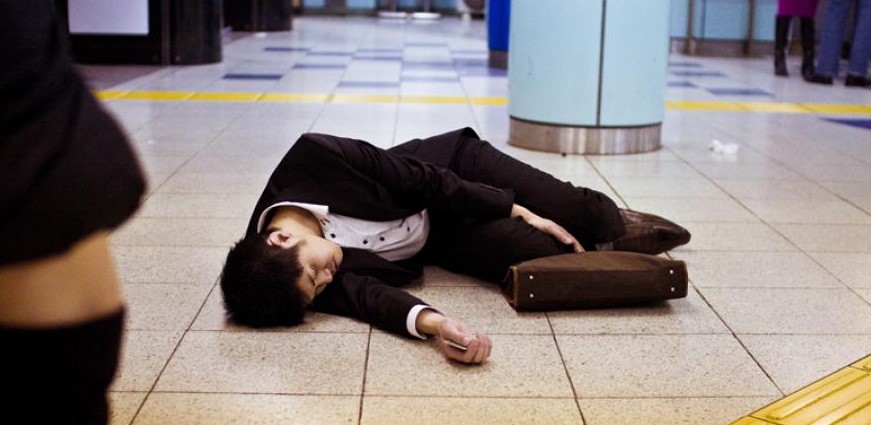 Overwork and homelessness are part of Shinzo Abe's legacy / Image: 神酒 九龍
Overwork and homelessness are part of Shinzo Abe's legacy / Image: 神酒 九龍
In line with his predecessor, Abe’s rule ensured freedom for the bosses and tyranny for the working class. He gained global fame through his “Abenomics”: a programme of throwing money at the zaibatsu (big business conglomerates) and filling the pockets of the board directors and shareholders. In theory, this was then supposed to “trickle-down” into the hands of the commoners.
Just like in the US under Ronald Reagan, exactly the opposite happened. Rather than the whole of society getting richer, ordinary working-class people in Japan were subjected to a terrible squeeze on their living situation and notoriously brutal working conditions. 209,901 people committed suicide under Abe’s rule from 2012 to 2020, 19,035 for work-related reasons. These are, of course, only the official statistics.
The government annually compensates around 200 cases of karōshi – deaths due to overwork: cardiac failures or brain haemorrhages. But this, like many other statistics held by the Japanese government, is a doctored number. It doesn’t include “non-regular workers”, the most downtrodden layer of the Japanese working class: the part-timers, agency workers, self-employed contractors, etc. These amount to 20.77 million people, out of the total labour force of approximately 68.6 million. This means that 30 percent of the real workforce is not included in these national statistics. Campaigners fighting against overwork estimate work-related deaths to be closer to 10,000 a year.
Another example of doctoring is the number of homelessness in Japan. Officially, the government claims there are fewer than 4,000 homeless people in the entire country. But the methodology for obtaining such data collection is truly remarkable. This number is collected in the form of a survey, where clerks are given a clipboard and a pencil and sent out to parks and passageways where homeless people congregate, and count how many they can spot.
In a country where begging is a crime and social stigmatisation is ever present, a considerable amount of homelessness is “hidden”. There are thousands of people in Japan without a permanent address, many of them so-called “cyber-homeless” who, unable to pay the monthly rent of a regular flat, resort to renting out cubicles in cyber-cafes. The scale of this phenomenon far exceeds the official numbers on homelessness. There are an estimated 4,000 cyber-homeless in Tokyo alone.
This is the real legacy of Shinzo Abe. Hundreds of thousands of precarious workers, not knowing if they will be called to work tomorrow or not, stashed away from the sight of society in two square metre cubicles. Sat in front of a computer screen every night, they sedate themselves with alcohol in order to sleep, until one day they can’t take it any longer. This nightmare extends even to the more affluent layers, who are not free from the stress of overwork, which they must commit to if they don’t want to end up without a home and regular employment.
All the while, the wealthy shachō laugh in their mansions, sipping iced champagne from crystal glasses, splurging millions of yen on a whim on Patek Philippe watches or Baccarat, driving their Alfa Romeos, Ferraris, Jaguars and Maseratis.
Average wealth across all households fell by 3.5 percent in 2014-2019, a mere 1,267,000 households own ¥299 trillion in net financial assets. That's 2.36 percent of total Japanese households owning 19.42 percent of total household wealth. Within this, 84,000 households hold ¥84 trillion, making that a proportion of 5.45 percent of the total being owned by a tiny 0.15 percent. That’s while both the average household net wealth and net adjusted disposable income are lower than the OECD average. This is especially criminal for such a wealthy and advanced society.
Unsympathetic vote
While the assassin claimed his individual motives weren’t political, the fact that people like him are driven to such desperate acts is indirectly a result of Abe’s social policies. This historical accident is an expression of immense contradictions, upon which the Iron Triangle of the LDP, keiretsu (the network of the biggest Japanese companies), and the state bureaucracy has based itself on.
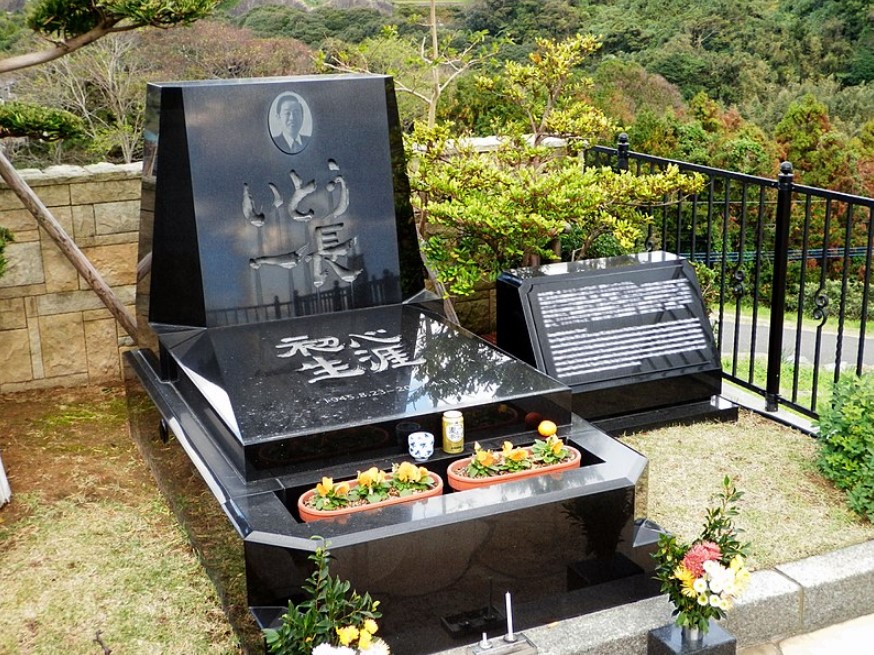 Mayor of Nagasaki Itchō Itō was shot in 2007, showing political violence is not as uncommon as some Western media claim / Image: Marine Blue
Mayor of Nagasaki Itchō Itō was shot in 2007, showing political violence is not as uncommon as some Western media claim / Image: Marine Blue
Political assassinations and political violence in general aren’t as uncommon as some Western media outlets suggest. For instance, the Mayor of Nagasaki, Itchō Itō, was shot in 2007, and Finance Ministry official Toshio Akagi was driven to suicide in one of Abe’s corruption scandals. But it goes without saying that the assasination of such a prominent public figure will signify a tectonic shift in Japanese politics.
The most immediate result, which everyone was expecting, was a surge in support for the LDP in last Sunday’s Upper House elections, similar to that when Masayoshi Ōhira died of a heart attack during the election campaign in 1980. Looking at the numbers, while there is some evidence of that happening, it is nowhere as large a “sympathy vote” as the one that the LDP received in 1980.
The voter turnout was just 52.05 percent, and while an improvement on 2019’s 48.8 percent, it still shows an enormous disconnect between bourgeois politics and the masses. According to Kyodo exit polls, 21.9 percent of the unaffiliated voters voted for the LDP, which while reasonably large is less than you might expect given the dramatic death of the most important LDP figure in living memory, just two days before.
In another survey published by Kyodo on Tuesday, 62.5 percent of voters said their votes were not swayed by Abe’s assassination, while only 15.1 percent said they were. While 58.4 percent said they don’t think revising the constitution should be a priority, 37.5 percent said it ought to be, pointing to a potential growth of polarisation between these two groups. Unsurprisingly the main issue the voters were concerned with was dealing with the economic situation and the rising cost of living, at 42.6 percent.
What next for the LDP?
The LDP nevertheless gained a modest amount of seats in the House of Councillors, and together with their long-standing coalition partners Komeito obtained a healthy simple majority. Moreover, together with two other pro-constitutional change parties (the Democratic Party for the People, and Nippon Ishin no Kai), they are in place to begin the constitutional amendment of Article 9, having a two-thirds majority altogether. This creates a path for the remilitarisation of the country.
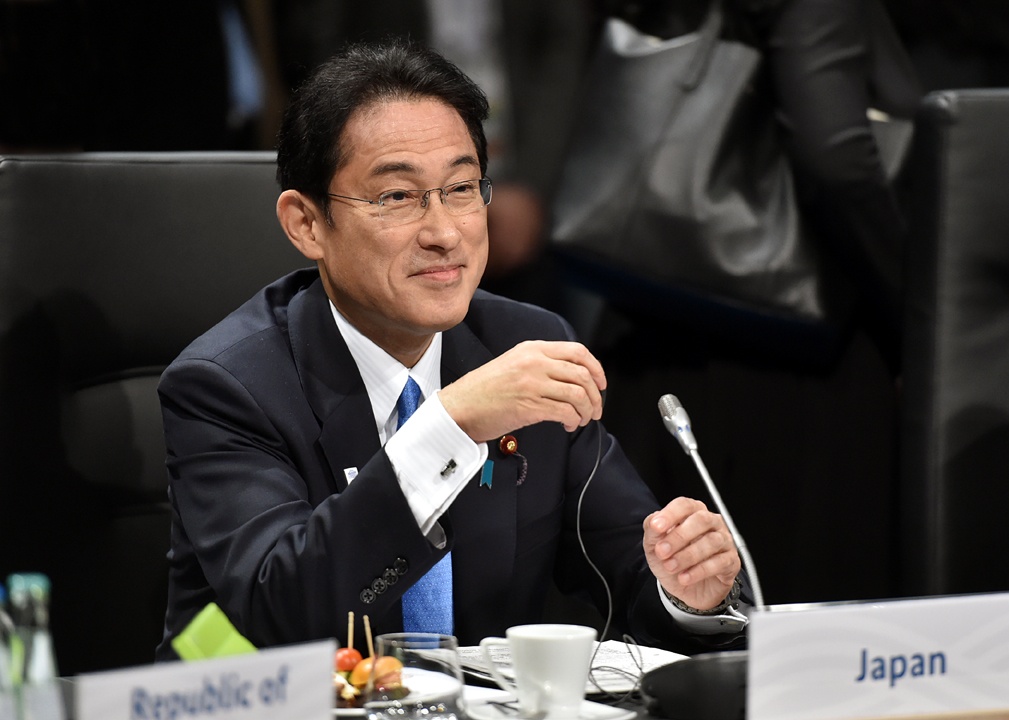 Abe’s death is a gift for current PM Fumio Kishida, who openly opposed him / Image: 外務省 Wikimedia Commons
Abe’s death is a gift for current PM Fumio Kishida, who openly opposed him / Image: 外務省 Wikimedia Commons
The opposition parties are almost not worth mentioning. The main opposition party, the Constitutional Democratic Party of Japan, yet again lost seats. The CDPJ is not offering anything different from the LDP, the only difference being the question of the constitution change. The Japanese Communist Party also lost seats, with their stale, bureaucratic banner yet again failing to attract any attention from the masses.
Despite the LDP remaining firmly in power, this does not mean a period of peace and tranquillity will follow. Even before Abe’s assassination, significant tensions were emerging between the current PM Fumio Kishida and Abe. While Abe still wielded an enormous amount of influence within the party, Kishida came from the rival Kōchikai faction.
Kōchikai, traditionally representing the little bureaucrat and petty-bourgeois, is probably the most moderate faction of the LDP. One of the main sticking points between Kishida and Abe was that of the constitutional change. Kōchikai traditionally favours the pacifist clause in the constitution, while trying to rely more on US imperialism. When the Ukraine invasion began this year and Abe was throwing around the idea of having US nuclear weapons stationed in Japan, effectively breaking with the country's strict non-nuclear policy, Kishida went openly against him in the parliament and called the idea outright unacceptable.
Abe’s death is a gift for Kishida. With Seiwa Seisaku Kenkyūkai now running around headless, with seemingly no one to replace the experienced figurehead, Kishida now has an opportunity he couldn’t have imagined only weeks ago. That being said, it does not mean he is free to act as he pleases. Abe’s faction is still the largest force in the party, and Kishida is still affiliated to the ultra-reactionary Nippon Kaigi, which extended its sickening influence under Abe’s rule. Nobusuke Kishi’s arch-rightwing dynasty didn’t die with Abe either. Nobuo Kishi, Abe’s younger brother, is in charge of the Ministry of Defence.
Kishida will need to play his cards slowly, and publicly support the constitutional revision and some other policies of the ultra-right even if he doesn’t fully support them. He may attempt to stall or slow down the process of introducing these changes, but if he makes any more sudden moves, he may be risking his life, both politically and literally, as the right wing won’t stop at anything to fulfil their aims.
He will also be under pressure from US imperialism. On paper, Kōchikai’s policies may seem extremely favourable for Washington, as preservation of the pacifist constitution comes paired with increased reliance on the US for security. However, US imperialism is in a state of relative decline and contending with rising powers, particularly China. Despite remaining the most powerful force on the planet, with the increase of tensions globally and in East Asia, Washington wants Japan to field its own army to make sure US forces can be used elsewhere if needed.
Down with capitalism: ‘old’ and ‘new’. Fight for socialism!
One of Kishida’s flagship policies is that of “New Capitalism”. An outright rejection of Abenomics, it is supposedly aimed at redistributing wealth more equally throughout society. How Kisihda expects to achieve this is a mystery, as his plans, when revealed in May, met with severe backlash from financial capital, which is allergic to any increases in taxes. The plans were also criticised by the right wing of the party, leading to the final plan released in early June being nothing more than a bunch of empty rhetoric about creating a “virtuous cycle of growth and distribution”, with no concrete proposals.
Nevertheless Kishida will try to use this slogan to try and gain some popular support for his government. Japanese workers may initially express some limited support for the idea, considering how dire their position is at the moment under ‘old capitalism’. But it is a completely empty slogan with not even the weakest reforms proposed, utterly impotent to deal with the historic crisis wracking world capitalism. Kishida’s rule will only lead to the further growth of disillusionment and discontent.
At the end of the day, the only way out for the Japanese working class is the same as for the working class in all countries of the world: break with capitalism, smash the structures of the state, and establish a truly democratic socialist society under the control of the working class. This is a solution that no one in Japan is currently proposing.
The events of the past week show however the increasing instability of the situation in the country. Having been exposed to the pernicious role of the capitalist-owned mass media, the dynastic sham of so-called democracy, and the disgusting connections of this regime with the fascists and rabid anti-communists, many Japanese people will undergo a change in consciousness.
The Japanese working class needs an organisation that will pick up the banner of communist revolution and take it to its final conclusion. The JCP has long ago forsaken this role in favour of reformism and bureaucratism. In the event of a revolutionary situation, they would at best paralyse the movement, stifle it, and help to make sure it dissipates. Thus, there is a pressing need for the most advanced workers to push these old careerists aside, and show the way forwards. This requires an organisation, which cannot be built overnight, but the task of building it must start now.
If you agree with our ideas, analysis, and programme, we invite you to join the ranks of the International Marxist Tendency.

